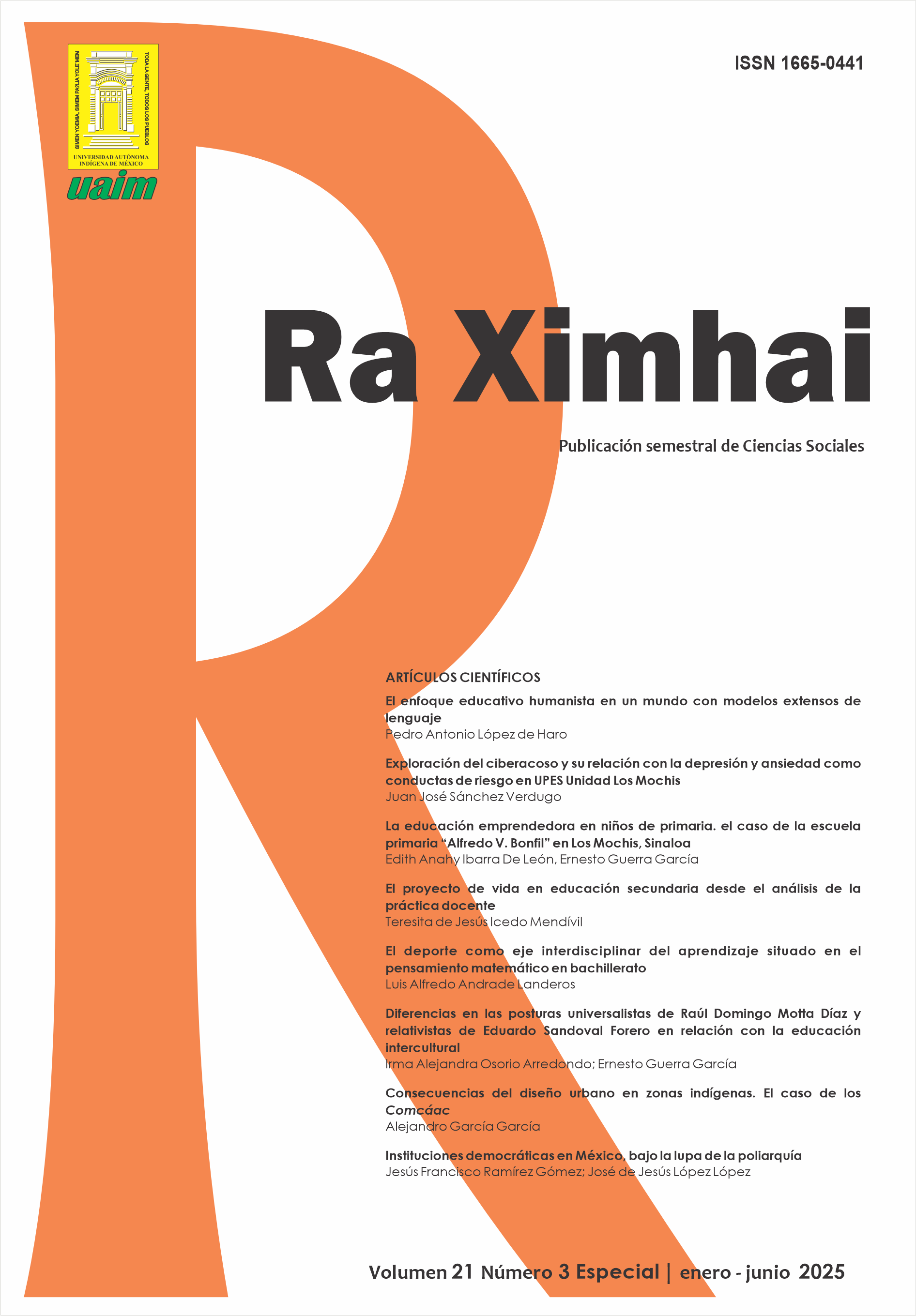Consecuencias del diseño urbano en zonas indígenas. El caso de los Comcáac
DOI:
https://doi.org/10.35197/rx.15.05.2025.07.agPalabras clave:
vivienda nómada, urbanización forzada, asentamientos indígenas, aculturaciónResumen
El presente artículo examina el proceso de transición que atraviesa el pueblo Comcáac o Seris al pasar de una vida nómada, sustentada en la morada temporal, la haaco hahéemza o casa de arcos, hacia formas de vivienda urbana impuestas en sus asentamientos desde hace algunas décadas.
Como resultado de un análisis histórico, observación de campo y entrevistas con la comunidad, se destacan las propiedades físicas y simbólicas de la haaco hahéemza, vivienda tradicional que logró satisfacer con eficacia las necesidades climáticas y culturales de los Comcáac, al tiempo que fortaleció su identidad. En contraste, las casas de corte urbano ofrecidas por el gobierno federal recientemente son inhabitables, en un el trazado reticular, sin servicios básicos de energía eléctrica, agua, drenaje, una ubicación que fragmenta la convivencia comunitaria y rompe la articulación orgánica con el medio natural. Estas lógicas de diseño de corte urbano no ofrecen las condiciones mínimas para ser usadas y alteran las dinámicas socioculturales de manera profunda.
En conclusión, se evidencia un choque entre las acciones oficiales que pretenden “modernizar” los asentamientos y la herencia nómada de los Comcáac, que demanda soluciones de diseño sensibles a su cosmovisión. El estudio invita a rescatar estrategias constructivas y de planeación capaces de conciliar mejoras funcionales con la preservación de la identidad cultural
Descargas
Citas
Bachelard, G. (2020). La poética del espacio. Fondo de Cultura Económica (FCE).
Colomina B. y Wingley M. (2021) ¿Somos humanos? Notas sobre una arqueología del diseño. Ed. Arquine. México.
De Ita, D., García, & Ugalde. (1994). Modernización rural democrática e incluyente. En A. De Ita, El futuro del campo. Hacia una vía de desarrollo campesino. Ed. UNORCA-CECCAM- Friedrich Ebert Stiftung.
Fergus, O. (1954). La evolución de la vivienda humana. Almeda.
Foster, G. (1988). Las culturas tradicionales y los cambios técnicos . Ed. Fondo de Cultura Económica.
García, A. (1998). Vaquerías: un proyecto de asociación privada ejidal. En L. Garza, Nuevo León hoy. Diez estudios sociopolíticos. La Jornada Ediciones - UANL.
García, A. (2003). Los procesos comunitarios de rechazo-aceptación a la transferencia tecnológica para la producción campesina en Nuevo León. HUMANITAS Anuario del Centro de Estudios Humanísticos 2003. UANL.
García, A. (2009). Las transformaciones actuales en las relaciones campo-ciudad en el noreste mexicano. En R. García, S. Arzaluz, & J. Fitch, Territorio y ciudades en el noreste de México al inicio del siglo XXI. El COLEF - Miguel Ángel Porrúa.
García, A. (2024). De la morada nómada a la vivienda urbana. Los comcáac, arquitectura viva entre el desierto y el mar. UANL- La biblioteca.
Giglia, A. (2012). El habitar y la cultura: perspectivas teóricas y de investigación. Anthropos.
Giménez, G. (2005). Teorpia y análisis de la cultura. CONACULTA.
García Gualda, S. M. (2021). Urbanización y municipalización en territorio indígena. Bitácora Urbano Territorial, 31(II): 131-142. https://doi. org/10.15446/bitacora.v31n2.89592
Sieglin, V. (2004). Modernización rural y devastación de la cultura tradicional campesina. UANL- Plaza y Valdés.
Solar, J. (2021). Impacto de la urbanización en el territorio Pewenche: el caso del poblado de Villa Ralco, Alto Biobío. URBE. Arquitectura, Ciudad y Territorio, (13), 21-35. https://doi.org/10.29393/UR13-2IUJT10002
Descargas
Publicado
Cómo citar
Número
Sección
Licencia
Derechos de autor 2025 Alejandro García García

Esta obra está bajo una licencia internacional Creative Commons Atribución-NoComercial 4.0.
Usted es libre de:
- Compartir — copiar y redistribuir el material en cualquier medio o formato
- Adaptar — remezclar, transformar y construir a partir del material
- La licenciante no puede revocar estas libertades en tanto usted siga los términos de la licencia
Bajo los siguientes términos:
- Atribución — Usted debe dar crédito de manera adecuada , brindar un enlace a la licencia, e indicar si se han realizado cambios . Puede hacerlo en cualquier forma razonable, pero no de forma tal que sugiera que usted o su uso tienen el apoyo de la licenciante.
- NoComercial — Usted no puede hacer uso del material con propósitos comerciales .
- No hay restricciones adicionales — No puede aplicar términos legales ni medidas tecnológicas que restrinjan legalmente a otras a hacer cualquier uso permitido por la licencia.








